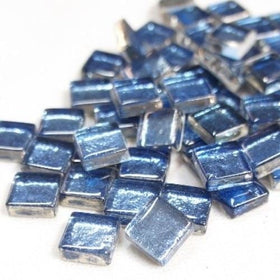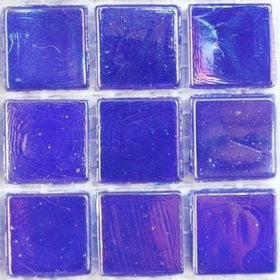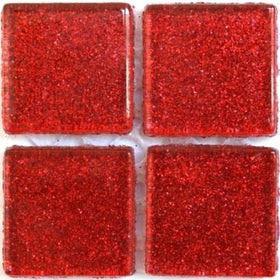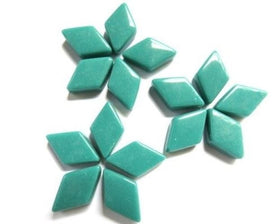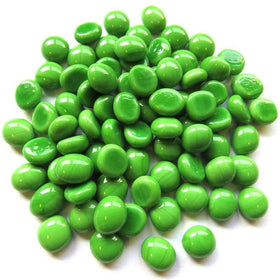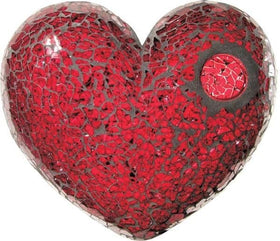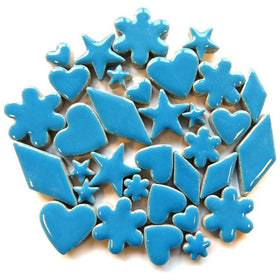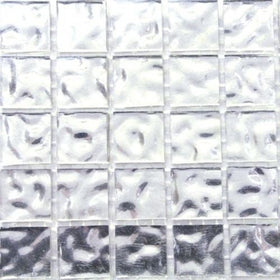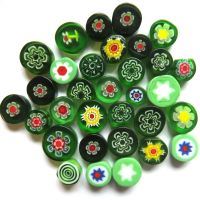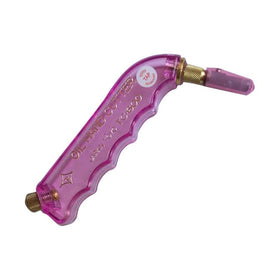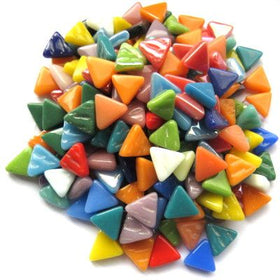Ed Chapman: Fragmented Reality
Ed Chapman: Fragmented Reality
In his artwork, through focused intent and the careful placement of selected mosaic materials, Ed Chapman creates a fragmented reality that draws the viewer in and invites inspection.
“I try to make mosaics, usually portraits, which are an accurate likeness first and then a nice surprise to the viewer to discover the picture is made from fragments of something ordinary, interesting sometimes, or dare I say basic and dull sometimes.”
Most often there’s something special in store for those who linger to take a closer look. The artist’s dark sense of humour permeates this portrait of Clint Eastwood as Dirty Harry. The image has been created by mosaicking literally thousands and thousands of used bullet casements.
Eclectic in his interests Chapman’s subject matter is diverse and also includes functional objects. Once again the artist’s dry humour surfaces in the titling of this stars and stripes coffee table, Easy Rider.
Recently, via e-mail correspondence, Mr. Chapman answered a few questions about his history and art practice for Hobby Island Mosaic blog readers:
I understand your parents were artists. Could you tell me a bit about your early years and what influenced you to become an artist?
My parents met at Liverpool College of Art in the early 1960s. My mother who was 18 months older started there earlier and readers may be interested to learn John Lennon and 'Fifth Beatle' Stu Sutcliffe were her classmates and later flatmates. My mother was top of painting classes and my father in sculpture. My mother sold for the same as L.S. Lowry in the early 1970s and my father went on to teach art and sculpt in his spare time. When my siblings and I were growing up it was a very creative home with the art materials always on hand for a start. There was a sort of standard of art ability you had to live up to, the whole family is quite creative, like a lot of families I imagine. We even had a family newspaper which ran for about a month, I was the Picture Editor, at the age of six!
I have read that Chuck Close was one of your early influences. What in particular captured your interest in Mr. Close’s extensive body of work? Were there any specific artworks of Mr. Close’s that has influenced your choices in your own art practice?
I think his work is really clever, to make such accurate portraits from sort of hieroglyphic shapes. I know he had created huge portraits earlier too, these are incredible, but it was the more recent stuff I liked especially. His self-portraits with glasses appealed.
Is there any other artist(s) or life events that you would like to mention as a past (or present) influences?
Various artists for varying reasons … Vincent van Gogh for his originality, look at his work and it stands apart, he surpassed the Impressionists in my opinion as I think one of them said. Painting Dr Gachet one day and Crows in a Wheatfield the next, unbelievable. There will probably never be such an artist ever again, to create so many works in the last 100 days of his or her life. Were it not for his sister-in-law we may never even have heard of him! Vik Muniz from Brazil has been at the forefront of collages for years and shown what is possible with that medium. I admire Muniz in the same way I admire Dali for his skill and his ideas. If I don't have the ideas I hope I have some of their skill. I admire Banksy, known him from way back, for similar reasons, ideas are fantastic and the art is too. I admire other artists in the world of music especially too for their life-long search for creating something new. Bob Dylan comes to mind, Leonard Cohen, too. People like Lennon and Richard Burton are also fascinating and inspire me. Paul Weller and even Madonna are inspirational in different ways.
How did you begin your work with mosaic art making?
I was asked to create a portrait using torn pieces of paper for an art assignment. I did a picture of James Dean and I was quite pleased with the results. I certainly loved the medium. I liked the way fragments could create an accurate representation of the subject. If you are immediately OK or good at something you're bound to continue at it. I went on and made loads of paper mosaics of icons, which was not a done thing at the time in the art world in the UK certainly. For the next six years I did nothing much more than create dozens of portraits in paper and got better tat them. After six years I nervously tried my hand at ceramic mosaics. The first one - of Che Guevara - was pretty good and the process began again this time with ceramic not paper. 
What about the process of mosaic-making captures you and continues to hold your attention?
The challenge of doing a unique portrait and one that has never been seen before in the history of art. The pieces of ceramic tile coming together I find very exciting, like creating a unique jigsaw. I need to get out more! I will soon be doing new things with ceramic, not seen before. Making Jimi Hendrix in 5000 guitar picks was a first in art which means a lot to me. I am always looking for new materials to use to create a portrait.
Can you share a bit about your current work and upcoming exhibitions?
I have a show on in London in November which is the first exhibition of all new work for ten years. I have just completed a mosaic for the chef Gordon Ramsey's Foundation which sold for £13000. It was a portrait of Mrs. Thatcher in coloured penny coins. I am working on a Pink Floyd album cover in vinyl records and have just finished a portrait of one of the world's greatest ever actors commissioned by his widow, a real honour., this will be unveiled later this year.



